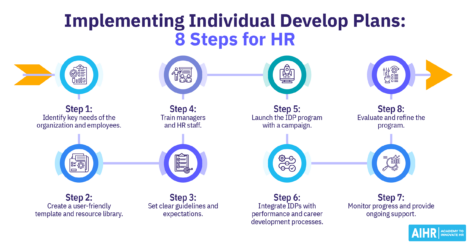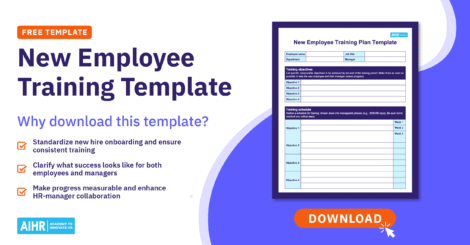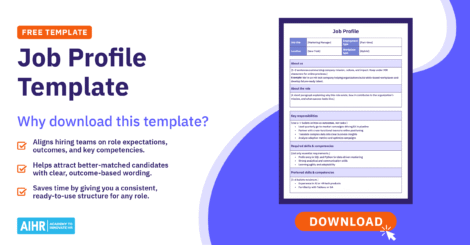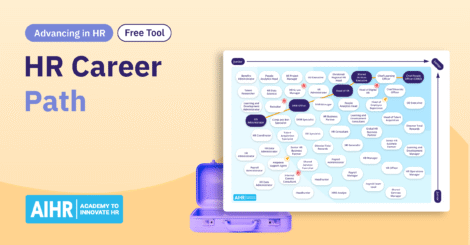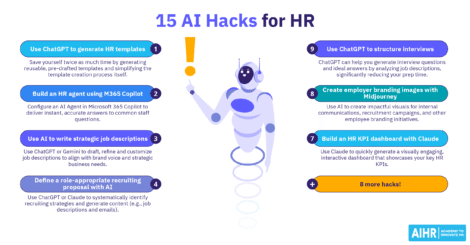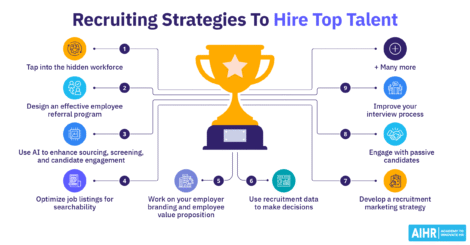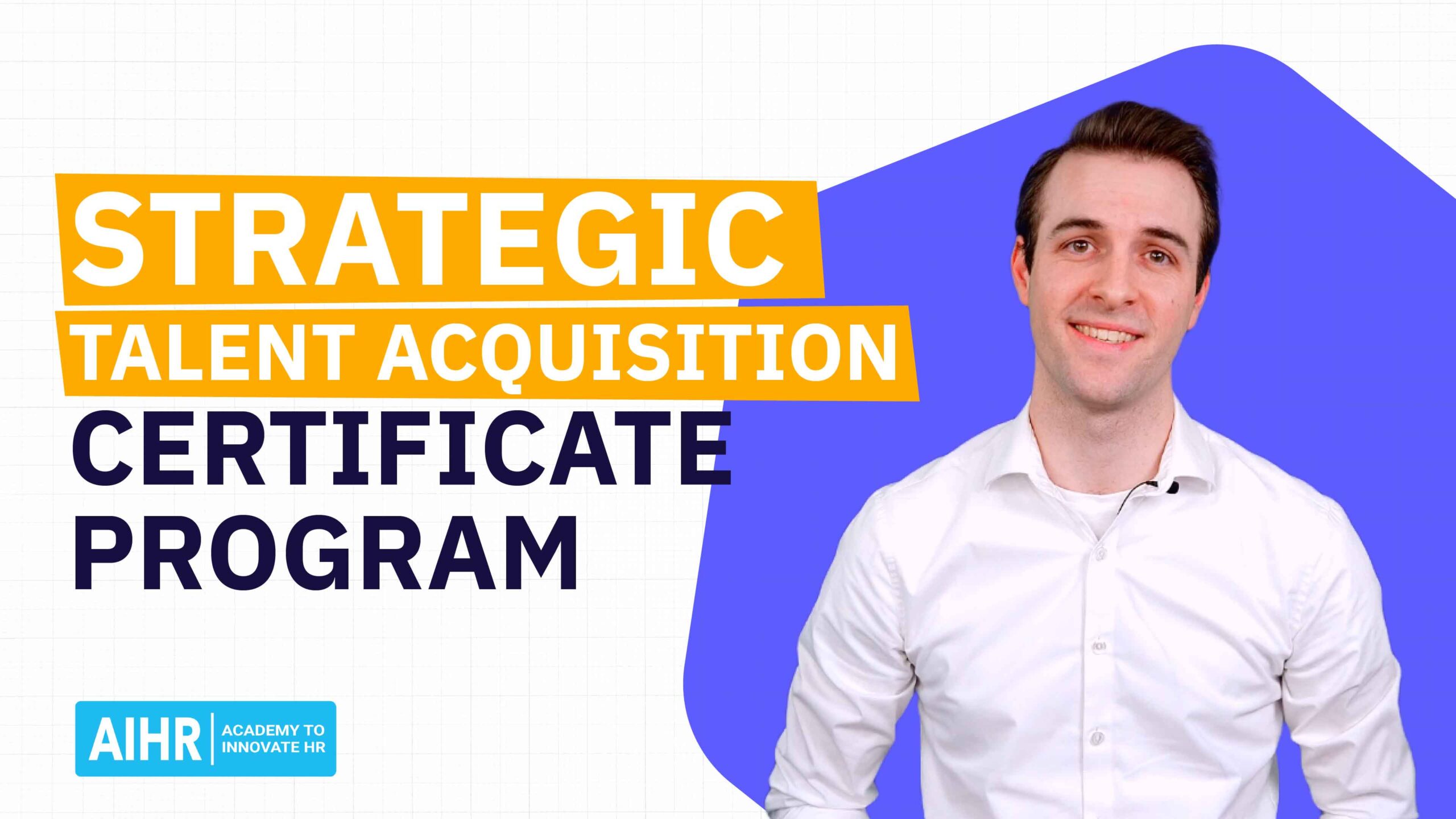Using an interview template in your hiring process could give your company an edge in attracting top talent and offering a positive candidate experience. According to Harvard Business Review, bad hiring decisions lead to 80% of employee turnover, and a lack of process causes 45% of bad hires.
A well-defined interview process with an agreed-on template structure helps standardize and scale interviews by providing a consistent structure. This article discusses the importance of interview templates and how you can use them. It also includes a free downloadable job interview template.
Contents
What is an interview template?
Why is a good interview template important?
Benefits of using an interview template
5 key elements of a good interview template
How to use an interview template
5 types of interview templates
What is an interview template?
An interview template provides a structured framework for conducting interviews during recruitment and hiring. It outlines the essential questions and scoring criteria to use consistently across all interviews for a particular position.
An interview template streamlines the interview process and helps create consistency for a fair and equitable evaluation of candidates. You can and should customize interview templates to fit the requirements of various job roles and interview types, such as first-round screenings and final-round interviews.
Why is a good interview template important?
A well-structured interview outline or job interview template is the cornerstone of effective HR hiring practices. Using an interview structure for recruiters and hiring managers provides a clear roadmap for the interview process and lists all the questions and topics that should be covered.
Counteracting cognitive biases in interviews is also essential. If left unchecked, these biases can lead to unfair hiring decisions and undermine your company’s diversity efforts.
For instance, the ‘halo effect’ occurs when a positive first impression leads to an overly favorable evaluation, while ‘anchoring’ occurs when initial information strongly influences subsequent judgments. Meanwhile, ‘tribal loyalty’ can cause interviewers to favor candidates from similar backgrounds.
Standardized interview templates can minimize these biases and ensure hiring managers assess all candidates on their qualifications and potential rather than on subjective impressions or personal biases.
“Beyond streamlining the interview process, an interview template can contribute to a positive candidate experience. It ensures the panel is adequately prepared; questions are relevant to the requirements of the job, and that the candidate can receive proper feedback at the end of the hiring process.”

Benefits of using an interview template
Here are some additional benefits of a good interview template:
- Consistent and comprehensive coverage: A standardized template can help prevent interviews from veering off-topic and reduce the likelihood of overlooking important questions or evaluation criteria.
- Efficient and scalable hiring: Using customized interview templates for each role saves time and ensures a standardized hiring process at scale throughout the organization.
- Legal compliance and risk mitigation: A well-crafted template helps mitigate the risk of legal issues by ensuring all questions are relevant to the job and don’t discriminate based on protected characteristics.
- Objective candidate evaluation: It provides a clear framework for evaluating candidates against specific job requirements, making it easier to identify the most suitable individuals for each role.
- Reduced bias: By asking the same questions and using the same evaluation criteria for all candidates, you can minimize the risk of personal biases influencing hiring decisions.
- Overcome skills gaps: Even if the interviewer lacks experience, an interview template can guide them through the process and suggest relevant questions to ask.
5 key elements of a good interview template
Here are the five essential elements every job interview template should have:

- Clear introduction and interview objectives: The template should outline the purpose and type of interview, the position, who should attend the interview, and its expected duration.
- Candidate information: This section should capture basic candidate details, such as their name, contact information, and the position they are applying for. It should also include their qualifications, employment history, and other essential details your hiring panel may need. A hiring manager can extract some of this information from the candidate’s résumé and pre-populate this section before the interview.
- Job-specific questions: These questions should directly relate to the job’s requirements to help your hiring panel assess the candidate’s knowledge, skills, and experience in relevant areas.
- A balanced mix of question types: A good interview template should include a variety of question types to provide a comprehensive assessment of the candidate, such as:
- Technical questions: These questions focus on the candidate’s relevant technical knowledge and skills. For example, technical questions for a Business Development Manager position might include: “What is your experience with CRM software?” or “How do you approach sales forecasting?”
- Behavioral questions: These questions explore the candidate’s past behavior in specific situations to help provide insights into their personality, problem-solving abilities, and working style. For example, “Describe when you had to deal with a recent personal failure in a business context. How did you handle the situation?”
- Competency-based questions: These questions assess the candidate’s specific competencies or skills that are essential for the job. For example, “Tell me about a time when you had to pitch to a new multi-national client. What steps did you initiate?”
- Interview notes section: This section should provide space for the interviewer to record key points from the interview, such as the candidate’s qualifications, strengths, weaknesses, overall impression, and scoring.
HR tip
When customizing your interview questions to assess candidates’ past behaviors, consider the STAR (Situation, Task, Action, and Result) method. This structured approach encourages candidates to describe situations they faced, the tasks involved, the actions they took, and the results they achieved. It provides insights into how candidates may handle challenges and apply their skills in real-world scenarios.
How to use an interview template
Here’s how to go about effectively using an interview template:
Step 1: Decide on the interview template structure
Begin by sourcing a good interview template (you can download our free job interview template). This will save you the time and effort you’d need to develop your own. Next, tailor the candidate information, question fields, and scoring to suit your organization’s requirements.
Step 2: Customize your interview templates by role
Customize each template by including questions about specific job requirements to delve deeper into candidates’ skills, experience, and qualifications. This ensures the interview questions are relevant to the critical competencies required for each position.
Targeted questions also help you better evaluate how well candidates match the job description, identify potential areas of development, and assess their suitability for both the role and your organization as a whole.
A proper job description is also essential to guide the interview questions and make the process more efficient. You can even use ChatGPT for recruiting to help you write job descriptions.
Develop your interviewing skills to attract top talent
Navigating different types of candidate interviews for multiple applicants is challenging but essential for HR professionals in recruitment.
In AIHR’s Sourcing & Recruitment Certificate Program, you will learn best practices for screening and reference interviews, how to reject candidates, and how to facilitate a hiring manger interview.
This online, self-paced Certificate Program will also teach you to create and implement an employer branding strategy that resonates with your ideal candidates.
Step 3: Incorporate the template into the hiring process
Walk your hiring panel through the template so they can become familiar with it, ask questions, and suggest changes if necessary. This will help them maintain a consistent, structured approach and limit the risk of overlooking important information or going off-topic.
This also helps ensure the hiring panel evaluates all candidates on a level playing field, promoting fairness and objectivity in the hiring process.
Step 4: Use an interview notes template to capture candidate responses
Taking detailed notes during every interview contributes to informed hiring decisions. By documenting candidates’ responses using an interview notes template, your hiring panel can refer back to specific points when evaluating candidates and comparing them.
This will help you ensure that the final hiring decision is based on objective criteria and that the hiring panel does not rely solely on memory or gut instinct.
Step 5: Use an interview evaluation template to rate performance objectively
After the interview, your hiring panel can use an interview evaluation template to rate the candidate’s performance against specific criteria. This will help standardize the evaluation process and ensure the panel assesses all candidates using the same metrics, leading to more informed and consistent recruitment decisions.
HR tip
Don’t forget to develop a well-defined job analysis or role scope before customizing your interview template. This will give you a clear understanding of each job’s responsibilities, required skills, and qualifications, allowing you to set the appropriate interview questions. Your candidate assessments and hiring decisions will be more accurate, and you can minimize the risk of hiring someone overqualified or underqualified for the position.
5 types of interview templates
Interview templates are essential not only during the hiring process. They can also help you gather valuable information throughout the employee life cycle, from recruiting to offboarding.
Here are five main types of interview guides you should add to your HR toolkit:
1. Job interview template
A job interview template outlines the key questions, evaluation criteria, and structure for interviewing job candidates. It helps interviewers maintain consistency through a framework for relevant questions about each role and its requirements. Additionally, it helps save time as you don’t have to prepare for each interview from scratch.
This template also helps promote fairness by assessing all candidates using the same criteria, reducing bias, and ensuring a focus on relevant competencies. At the same time, it can help you collect comparable data across multiple candidates, enabling you to make more objective decisions.
AIHR has developed its own customizable job interview template, which you can download for free using the button below.

2. Interview notes template
Interviews typically involve various candidates in multiple sessions over the course of a few weeks. An interview notes template provides a structured format for capturing key information during every interaction.
It also ensures your hiring panel can document essential details about each candidate, such as their responses to questions, their skills and experience, and overall performance. This then helps them make more informed, less biased hiring decisions.
3. Interview evaluation template
An interview evaluation template is a structured document used to score and assess a candidate’s performance during an interview. It helps standardize the evaluation process, ensuring the hiring panel rates all candidates against the same criteria, driving objectivity, and minimizing bias.
This template helps gather comprehensive feedback from interviewers by outlining critical areas for evaluation, such as skills, experience, role alignment, and cultural fit. You can then use this information to shortlist candidates and make informed hiring decisions.
4. Stay interview template
In addition to hiring top talent, you also want them to stay with the company for as long as possible. Stay interviews are a good way to do so. These are proactive conversations with current employees to help you understand their job satisfaction levels and identify potential factors that could cause them to resign.
A stay interview template provides a structured approach for these conversations, ensuring you ask all employees the same core questions. It offers a scalable interview guide you can easily adapt for different roles or departments and enables you to identify common issues across roles, departments, or the organization.
5. Exit interview template
Exit interviews are conversations HR has with departing employees to understand their reasons for leaving. An exit interview template can help collect standardized information you can use to improve your company’s talent retention strategies.
This template helps streamline the offboarding process by capturing data in a consistent format to identify trends among employees who resign. This way, the organization has a clear idea of which areas need improvement, such as compensation, benefits, or work culture.
HR tip
A structured interview with pre-determined questions is ideal for objective comparisons and skills assessments. However, an unstructured interview can provide valuable insights into a candidate’s personality and thought processes. When customizing your interview template, be sure to accommodate both structured and unstructured elements so you can gain a comprehensive understanding of each candidate and make the best possible hiring decisions.
To sum up
Well-structured and thoughtfully customized interview templates can save you time by streamlining the hiring process. At the same time, using a consistent framework ensures fair evaluation of all candidates, helping hiring panels make impartial recruitment decisions.
Interview templates also help mitigate risks and promote diversity. Whether you’re hiring new talent or conducting stay or exit interviews, incorporating customized templates throughout the employee life cycle allows for better data collection and more informed decision-making. Ultimately, this will improve your organization’s hiring outcomes.










